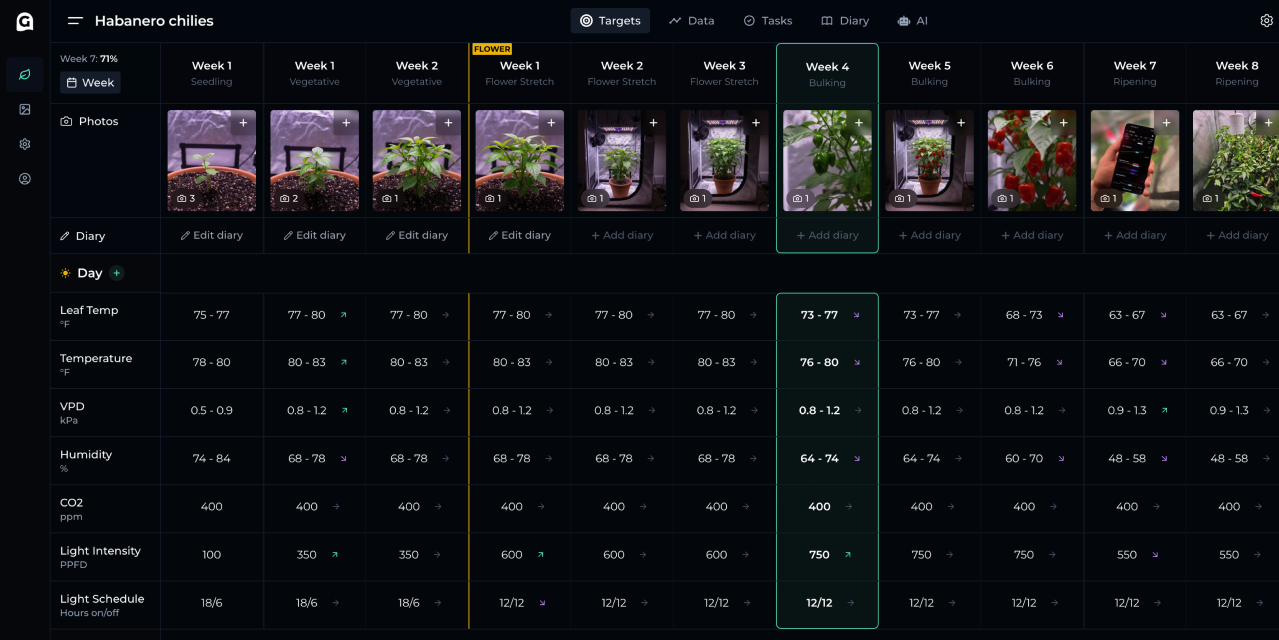Ruderalis explained: The origins of autoflowering cannabis


Cannabis ruderalis might just be the unsung hero of the cannabis world.
Although you’ll often find It’s often overshadowed by its more famous relatives, sativa and indica.
But without ruderalis, the world of autoflowering cannabis as we know it wouldn’t exist.
Ruderalis was officially identified in the wild regions of South Siberia by a Russian botanist named Janischewski in 1924.
Originating from the harsh climates of Central and Eastern Europe, this resilient cannabis plant has revolutionised modern cannabis growing.
Disclaimer: Any information given on this site is for educational purposes only. Please ensure if you’re growing cannabis, you’re doing so by the law and subject to appropriate permissions and licenses of the applicable country.
What is ruderalis?
Ruderalis is a distinct subspecies of the cannabis plant that’s often overlooked. But it plays a critical role in modern cultivation.
Unlike cannabis sativa and cannabis indica, cannabis ruderalis has adapted to survive in difficult, unpredictable climates.
Its geographic origins are Central and Eastern Europe and Central Asia.
What sets ruderalis apart is its unique ability to flower automatically, regardless of light cycles.
This evolutionary trait means ruderalis plants grow and thrive in extreme environments with short growing seasons.
This means that unlike other cannabis species, which require specific light conditions to trigger flowering, ruderalis plants begin flowering based on their age, usually within 3-4 weeks after germination.

Key characteristics of a ruderalis cannabis plant
Understanding cannabis ruderalis is crucial for maximising its potential.
Physical traits
Wild ruderalis plants are compact. By harvest time, they are typically only 1 to 2 feet tall.
This smaller size, along with thick stems, is part of what makes cannabis ruderalis plants highly resilient to harsh conditions.
The cannabis ruderalis leaf is distinctive and small, with leaf variation that includes fewer prongs than those of sativa or indica plants.
Auto-flowering ability
Ruderalis strains begin flowering based on age, usually within weeks of planting.
This auto flowering trait is foundational for breeding varieties that are easy to grow in varying environments.
Genetic makeup and growth cycle
Cannabis ruderalis genetics are geared up for rapid growth and survival.
The typical life cycle, from ruderalis seedling to harvest, is just 8 to 10 weeks.
THC content and yield
Wild cannabis ruderalis isn’t famous for its high THC content. Ruderalis is crossed with Sativa or Indica strains to create hybrids that may enhance specific traits like CBD levels.
This makes it incredibly valuable for medical marijuana purposes where THC is less critical.
Environmental adaptability
The plant’s ability to thrive in challenging environments and unique traits make ruderalis a vital component in modern cannabis breeding.
Especially for those wanting to create strains of resilient auto flowering plants.

The genesis of auto-flowering cannabis
The introduction of auto flowering cannabis plants revolutionised the cannabis cultivation landscape. And it all started with the unique characteristics of ruderalis.
Before auto flowering strains became popular, growers had to meticulously manage light cycles to trigger flowering in their cannabis plants.
But, the discovery and breeding of ruderalis changed the game.
The journey of autoflowering cannabis started in the early 2000s when cannabis breeders recognised the potential of ruderalis genetics.
The ability of ruderalis to flower automatically, regardless of light exposure, made it an attractive option for breeding… enter human intervention!
DJ Short, a pioneering cannabis breeder, was the first to selectively breed an autoflowering cannabis plant.
He merged the resilience and autoflowering trait of ruderalis with the desirable characteristics of sativa and indica.
Why breed with ruderalis?
Breeding ruderalis into cannabis seeds wasn’t just about the convenience of autoflowering. Growers wanted to harness the robust nature of ruderalis plants.
Who wouldn’t want to grow a plant that can tolerate extreme environments and complete its life cycle rapidly?
Understanding the natural taxonomy of indica and sativa helps breeders combine the best traits from each with the autoflowering ability of ruderalis.
Crossing cannabis ruderalis with sativa and indica strains can offer the best of both worlds:
- The potency and yield of traditional cultivars
- Combined with the hardiness and quick flowering of ruderalis
The result was the birth of autoflowering plants.
Which addition to flowering automatically, means you can harvest multiple times in a single outdoor growing season.
These strains quickly gained popularity, particularly in regions with short growing seasons or inconsistent daylight hours.

How ruderalis is used in modern cannabis breeding
Early autoflowering varieties were a breakthrough, but they came with their own challenges.
Early versions often had lower potency and yield. This lead many growers to view them as a compromise rather than a solution.
However, through continued selective breeding, autoflowering cannabis has significantly improved.
The modern cannabis industry owes much of its innovation to the integration of ruderalis into breeding programs.
Breeding ruderalis for autoflowering traits
By crossing ruderalis with cannabis sativa varieties and cannabis indica cultivars, breeders can produce ruderalis hybrids.
These hybrids combine the desirable medicinal effects, flavours, and yields of traditional cannabis strains with the hardiness and autoflowering capability of ruderalis.
These autoflowering crosses have made cannabis cultivation more accessible.
Particularly for novice growers or those with no environmentally controlled garden or challenging environmental conditions.
These plants' ability to begin flowering automatically without needing carefully managed light cycles simplifies the growing process.
It allows for consistent results even in less-than-ideal conditions.
Enhancing yield and potency
Ruderalis alone might have low levels of THC and a smaller yield compared to sativa or indica strains.
But, modern breeding techniques have significantly enhanced these aspects in ruderalis hybrids.
Through selective crossing, cannabis breeders have managed to increase both the potency and productivity of autoflowering plants.
To the point that they’re now competing with traditional photoperiod strains.
The focus has been on creating crossbreeds that retain the autoflowering trait but also deliver higher THC levels and bigger yields.
This has led to the development of hybrids that are:
- Quick and easy to grow
- Potent
- Flavorful
- Suitable for both recreational and medical purposes.
Adaptability and resilience
Another major advantage of using ruderalis in breeding is the adaptability and resilience it brings to the resulting hybrid plant.
When bred with sativa and indica varieties, this resilience is passed on to a hybrid plant, making it more resistant to pests, diseases, and environmental stressors.
This adaptability is especially beneficial for outdoor growers in regions with short growing seasons or unpredictable weather.
The robust nature of ruderalis crosses ensures that they can survive and thrive where other cannabis species might struggle. This leads to more reliable harvests.
Creating strains for specific needs
Breeders have also used ruderalis to create specialised strains tailored to specific needs.
For example, the high CBD levels and unique cannabinoid variation found in some cannabis ruderalis strains are particularly valuable for creating medicinal strains.
These cannabis strains offer therapeutic benefits without the strong psychoactive effects of high-THC strains.
By breeding ruderalis with other cannabis varieties, breeders can create hybrids with medicinal uses that provide targeted relief for conditions like anxiety, chronic pain, and inflammation.
These specialised hybrids have made more options available to growers and consumers alike.
Allowing for a more personalised approach to cannabis cultivation and use.

Takeaways
Ruderalis may not be as well-known as its cannabis cousins, sativa and indica. But, its impact on modern cannabis cultivation is undeniable.
From its origins in the harsh climates of Eastern and Central Europe to its role in the creation of autoflowers, ruderalis has revolutionised the way cannabis is grown.
Its unique ability to flower automatically and its resilience and adaptability make it a valuable asset for growers.
Particularly those dealing with challenging environmental conditions or seeking quick, multiple harvests.
As you move forward in your cultivation journey, remember the valuable insights ruderalis brings to the table.
By incorporating ruderalis into your growing, you can enjoy the benefits of autoflowering plants.
You can also improve your crop’s adaptability and explore a wider range of cannabis genetics tailored to your specific needs.
Happy growing!

FAQs
How is cannabis ruderalis different from cannabis sativa?
Cannabis ruderalis is different from cannabis sativa strains in several key ways. It’s shorter, typically reaching only 1 to 2 feet tall, and it has a faster growth cycle.
Unlike sativa, which requires specific light cycles to start flowering, ruderalis flowers automatically based on age. This means you harvest multiple times in one outdoor growing season.
Additionally, ruderalis generally has lower THC levels and is more resilient in harsh environments compared to sativa strains.
How is cannabis ruderalis different from cannabis indica?
Cannabis ruderalis differs from cannabis indica in that it is smaller in size, usually reaching only 1 to 2 feet tall, and it flowers automatically based on age rather than light cycles.
Ruderalis also has lower THC levels and a faster growth cycle compared to indica, making it more resilient in extreme environments.
Are ruderalis, indica and sativa different species?
Ruderalis, indica, and sativa strains are considered different subspecies of the cannabis plant.
These different types of cannabis have distinct characteristics in terms of growth patterns, flowering cycles, and chemical composition.
However, they are all part of the same single species, cannabis sativa.
What kind of high is ruderalis?
Ruderalis itself typically has low THC levels, so it doesn't produce a strong psychoactive high like sativa or indica strains.
Ruderalis effects are usually mild, and ruderalis is often more valued for its CBD levels and medicinal properties.
When bred with other cannabis strains, however, ruderalis hybrids can offer a balanced high, depending on the THC and CBD levels of the hybrid.
How potent is ruderalis?
Ruderalis is generally not particularly potent, as it has low levels of THC compared to sativa and indica strains. Pure ruderalis strains are rarely grown on their own.
Its potency is usually mild, making it more valued for CBD production and medicinal use rather than for strong psychoactive effects.
Is ruderalis the same as hemp?
No, ruderalis is not the same as hemp. While both are varieties of cannabis, ruderalis is a subspecies of cannabis that can flower automatically and has low THC levels. It’s often used in the creation of medical cannabis strains.
Hemp is also a subspecies of cannabis sativa grown primarily for industrial uses, like fibre, seeds and seed oils, and also has very low amounts of THC.
Do all autoflowers have ruderalis?
Yes, all autoflowering cannabis strains contain ruderalis genetics. The ruderalis trait of automatic flowering, independent of light cycles, is what gives autoflowers their ability to flower on their own, regardless of environmental conditions.
Do commercial growers use autoflowers?
Yes, some commercial cannabis growers use autoflowers. Usually, this is because of their fast growth and ability to produce multiple harvests per year.
However, they are often chosen for specific markets or environmental factors, as they typically yield less than photoperiod strains.
Grow smarter, not harder! Subscribe now to get the latest strategies, hacks, and advice to make the most of your cannabis growing efforts.









.avif)








